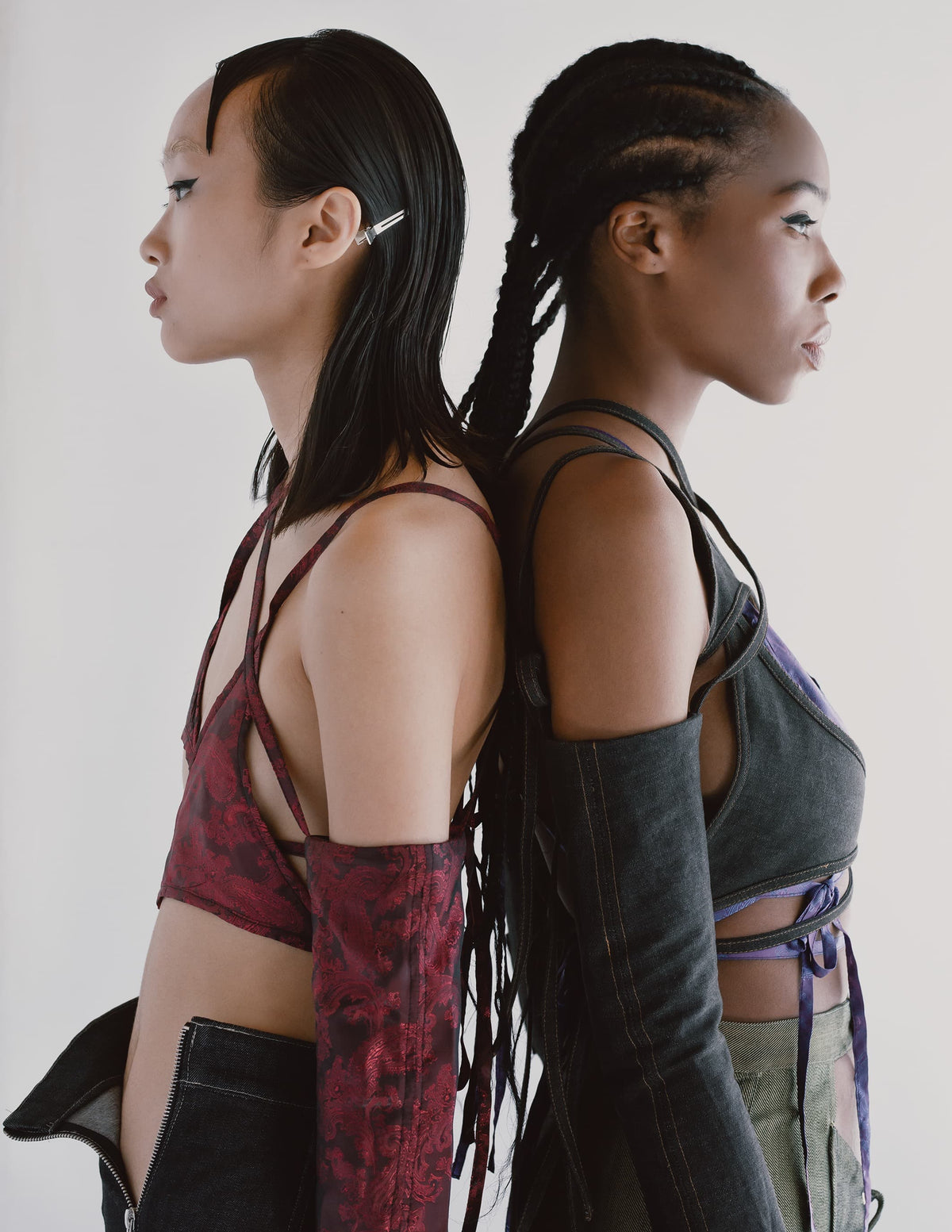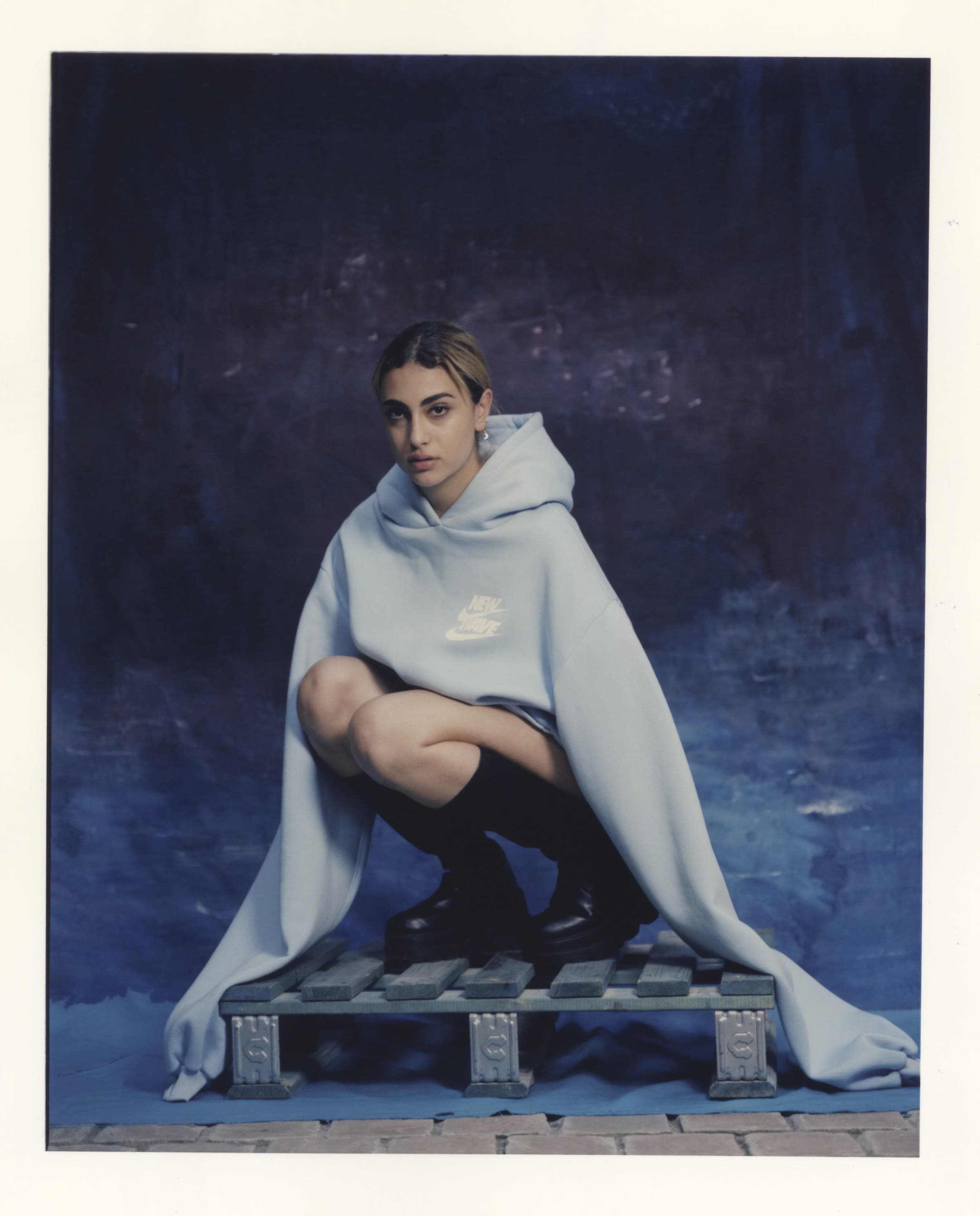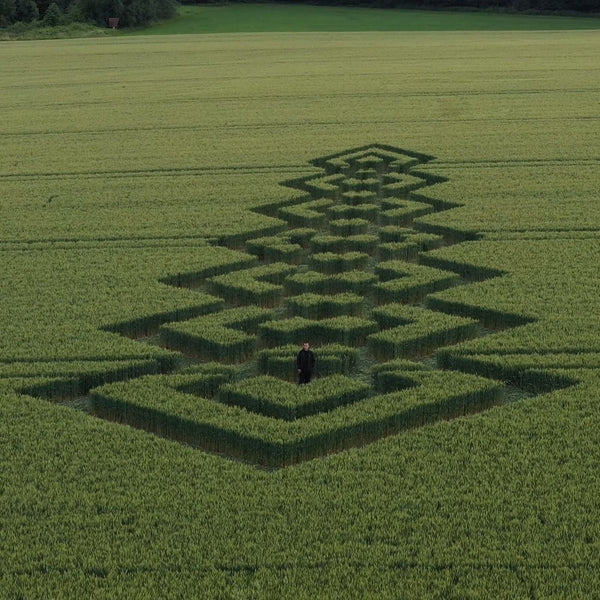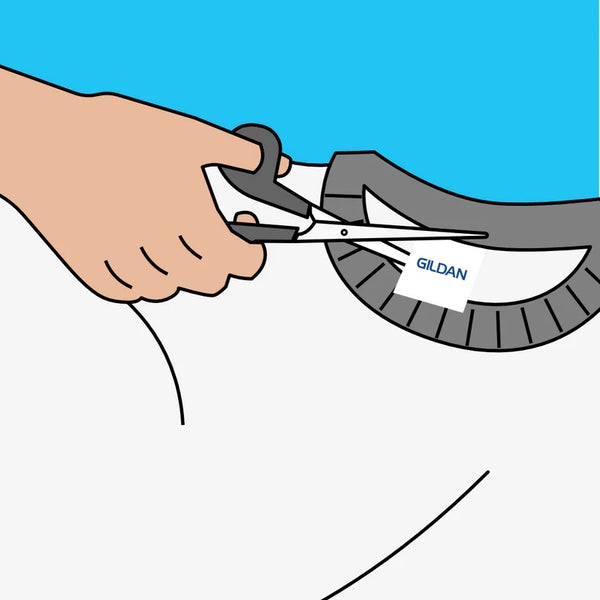Tenzi Lama has been developing her brand Silk-100 as an amalgam of her Tibetan heritage and German upbringing. In collaboration with The Internet Shop, she brought some of the elements characteristic to her brand into New Wave, a limited edition of handmade hoodies and t-shirts created in response to the Covid-19 pandemic.
While fusing different eras and geographies, this young Hamburg-based designer always keeps an eye on contemporary needs and offers sustainable solutions for the future. We spoke with her about the ideas, values, and influences that
drive her design approach both in Silk-100 and her latest collaboration.
Interview by Adela Lovric
Silk-100 X The Internet Shop collection © Daniel Feistenauer
Adela Lovric
Tenzi Lama
Tenzi, how did your brand Silk-100 come about?
It was pretty clear to me very early on that I would do something with fashion or art. When I was 12 or 13, I even built a fake brand with my best friend. Later I went to study fashion. While I was writing my thesis about population
growth and examining the lack of resources and space in big cities and how it affects fashion consumption, the idea of transformable and multifunctional fashion as a more sustainable solution came up. This led to Silk-100, which I
launched in 2019, just before the end of my studies. At that time, my plan was to go to Asia, to experience work in the industry there and work for another brand, and maybe do my label later. This changed because of the Covid-19
pandemic. I had a lot of time during this period, so I had the opportunity to focus more on my own brand.
Some of the brand's values are reducing consumption and waste, being more aware of the environment, and being mindful of how our consumption of fashion affects our environment, nature, and life on Earth. I think fashion is still
something people need. We need different clothes in different weather conditions, of course, but also to fulfill our social needs. That's why I try to pack as many clothing items as possible into one product and make it more useful
in everyday life and even on different occasions. For example, with some Silk-100 pieces, you should be able to go out with a jacket and transform it into a dress when you need it.
Did you have a specific role model as an inspiration for your approach to making sustainable and multifunctional clothing?
My Tibetan background is a big influence in that sense because Tibetans were historically nomads. As a nomad, always traveling from one point to another, you can't carry so much. The 'chuba' is their traditional clothing with long sleeves which they wear every day. It can vary from one religion to another, but it always has long sleeves that can be wrapped around and tied with a belt.
The traditional 'chuba' © tibetandfashion / IG
Tibetan girl in her chuba © Nikki McClarron / IG
A dress like that can also be worn as a jacket, and you can adjust your body temperature by wearing only one sleeve. Often they do wear just one sleeve while the other one is hanging in the back. They also use the wrapped-around jacket to carry things inside the folds. This kind of transformability inspires my designs.
What other concepts, values, and attitudes does Silk-100 encapsulate?
Cultural and gender diversity is also very important. I never separate clothing by gender. You can also see that in my shop where everything is shown together. As for cultural diversity, it is very present in my current collection, Sangye, which was influenced by my history, my Tibetan background, and the surroundings where I grew up. I grew up in Hamburg, and I have friends from everywhere living here with me in Germany. These things are intrinsic to Silk-100. The brand speaks to different people with different backgrounds rather than just one target group.

Sangye collection © Tessa Bozek
How do these elements from different cultures and traditions interact in your designs?
The bomber jacket, for example, is very inspired by the Tibetan chuba. Besides the longer sleeves, I also used the crossed closing from the Tibetan dress. I chose the bomber jacket as I connect it to the city, to the contemporary Western style. The contrast between these different elements makes them more obvious and thereby more interesting.
I don't know if there are so many new things coming in fashion. We already have some good designs that fit our lifestyle, and people like to wear them because they're very comfortable—like jeans, sweatshirts, t-shirts, and so on. I want to do comfortable clothing for everyday life because wearing it feels good, but I put these new elements on to make it more special. When it's transformable, it also makes it more sustainable and useful.

Sangye collection © Tessa Bozek
With the Sangye collection, I also wanted to outwardly show some clothing elements that are usually hidden, like pockets or the jacket lining. With these elements, I attempted to translate my wish for greater openness and tolerance. Now that more and more people are migrating and mixing, something completely new is growing. Things change not only visually but also in communication, energy, and our minds. Just by meeting different people from different places and living next to each other, something new will happen. We are all humans, and we need each other; we cannot live without each other and communication.
Your pieces are very open-ended; in a way, the wearers actually co-design them.
Yes, I want to give people a variety of options to change or individualize clothing.

Sangye collection © Tessa Bozek
For example, I put lots of buttons so you immediately have more options to close the garment differently, with or without pleats, or a drawstring so you can make it more puffy or straight. These are very simple elements that feel familiar to you; they're in your everyday clothes that make you feel comfortable. What I do then is try to give the wearer a greater feeling of individuality and freedom.
Tell us about your new collaboration with The Internet Shop.
Cey [Ceyhun Güney, Creative Director of THE INTERNET SHOP] approached me with his idea for collaboration. His idea for the New Wave collection refers to different waves of the ongoing pandemic we experienced over the past year. We wanted to give the wearer comfort and the possibility to wear it anytime, so we chose the hoodie. We changed some parts that we felt weren't necessary anymore. For example, we didn't use a long drawstring, which is part of the hoodie I designed for Silk-100.

Silk-100 Hoodie © Tessa Bozek
You can relate the idea of a "new wave" to different things: to our current time, but also to the music genre from the 70s and 80s. In any relation, it signifies something new. Perhaps you don't know what it is yet, but it makes you curious and affects how you see or think about things, either negatively or positively. Something is sure to change because of this new wave. The blue colors we chose are also referring to the first thought you might have when you think of a wave—you probably think of an ocean. It took us a long time to find the perfect blue and the perfect fabric. When we chose this fabric, comfort was really in focus. We connected these pandemic waves with being at home, in our comfort zone. It’s about being cozy while being restricted and not having the same freedom we used to have.
What were your main takeaways during this crisis and its "waves" and periods of lockdown? What was interesting for you creatively?
On the one hand, I felt that many people were buying a lot of things online because they had so much time. On the other hand, people have also had more time to think about what their values are and are becoming more aware of what they truly need.
Samia wearing the New Wave Sky Blue Hoodie © Daniel Feistenauer
For me, this was already clear as I was thinking about these things before as well. During the pandemic, I could focus more on which items are actually necessary, what you need in everyday life, and what is probably unnecessary. For example, not everybody needs party dresses, but you still need something to wear on a special occasion.
Do you have any ideas about what you'd like to do when this pandemic is behind us?
I’m really looking forward to traveling again, especially to big and crowded cities where my ideas and inspiration come from.







